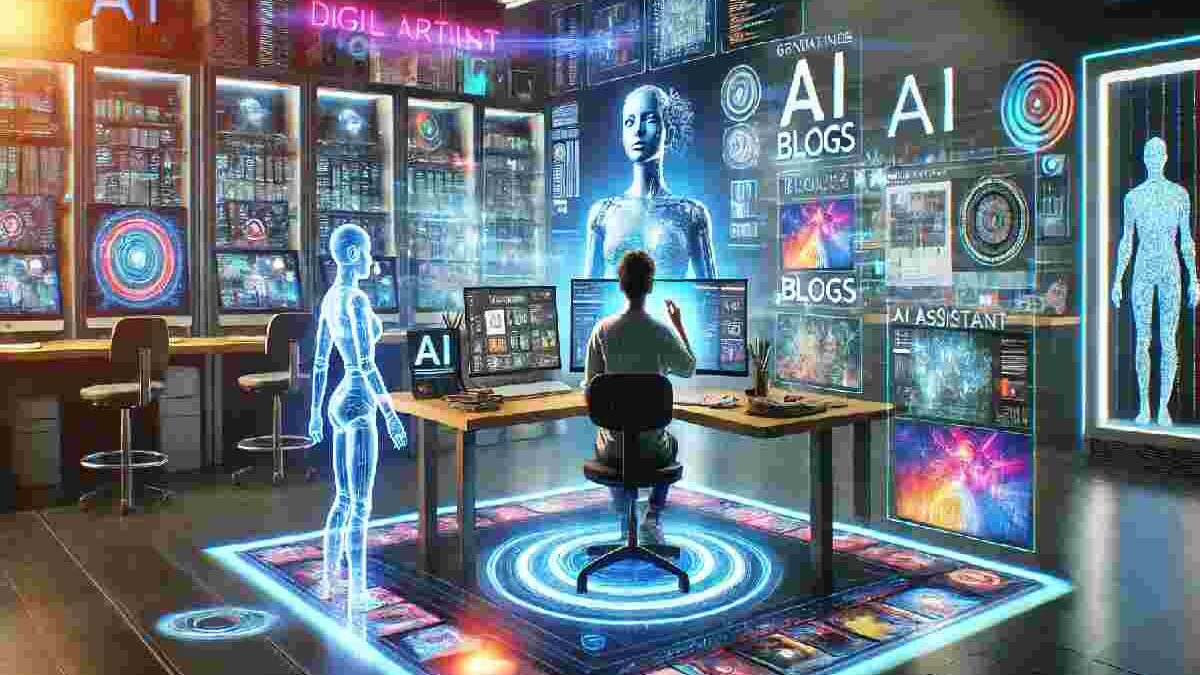Generative AI is Revolutionizing Content Creation in 2025
Content creation has always been the heartbeat of digital engagement, but in 2025, it’s beating to a different rhythm. Generative AI courses are equipping marketers, writers, designers, and even CEOs with tools that can create high-quality, personalized content faster than ever before. From generating blog posts in seconds to crafting hyper-targeted ad copy and even designing campaign visuals, Generative AI is redefining the creative process.
In today’s hyper-competitive landscape, content must be not only compelling but also timely, data-driven, and scalable. Generative AI meets all three requirements, allowing businesses to stay ahead without burning out their creative teams. The result? A new era where humans focus on strategy, creativity, and storytelling while AI takes care of the heavy lifting.
Table of Contents
1. The Evolution of Generative AI in Content Creation
Generative AI isn’t new, but 2025 marks a turning point. Early AI tools relied on templates and rules-based systems, producing repetitive and predictable output. Today’s AI models, powered by large language models (LLMs) and multimodal capabilities, generate text, images, videos, and audio that feel human-created.
Whether it’s crafting a personalized email sequence, scripting a YouTube video, or producing an AI-generated podcast episode, the technology can adapt tone, style, and complexity for different audiences, something that was unimaginable just a few years ago.
2. Why Generative AI Works for Modern Content Teams
a. Speed Without Sacrificing Quality
AI tools can draft a 1,500-word whitepaper in under two minutes, freeing up human creators to focus on refining the narrative and aligning it with brand voice.
b. Personalization at Scale
Generative AI can produce dozens of content variations tailored to different customer segments, making one-to-one marketing a reality.
c. Enhanced Creativity
Rather than replacing creative talent, AI acts as a brainstorming partner, offering new angles, formats, and ideas that humans may not have considered.
3. Key Use Cases in 2025
a. AI-Powered Copywriting
Brands are using AI to produce compelling ad copy, website content, and product descriptions optimized for SEO and conversions.
b. Visual Storytelling
Tools like DALL·E and Midjourney now generate brand-consistent imagery for social campaigns, presentations, and eCommerce listings without the need for costly photoshoots. Similarly, businesses are increasingly turning to platforms like Adobe Express AI presentation maker to design visually engaging slides and pitch decks in minutes, blending creativity with automation for faster professional results.
c. Script and Video Generation
From explainer videos to interactive training modules, AI can draft scripts, create voiceovers, and even produce video content autonomously.
d. Multilingual Expansion
Generative AI breaks language barriers by instantly translating and culturally adapting content for global audiences, opening new markets for businesses.
4. Real-World Examples of Generative AI in Action
- Coca-Cola’s AI-Generated Ad Campaigns: In 2025, Coca-Cola launched limited-edition designs and ad scripts entirely generated by AI, allowing faster turnaround and fresher creative concepts.
- HubSpot’s Automated Blogging Engine: HubSpot uses Generative AI to create SEO-optimized blog drafts that content managers can quickly refine, cutting production time by 60%.
- Netflix’s Personalized Trailers: AI-generated trailers are now tailored to individual viewing habits, ensuring every viewer gets a teaser that resonates.
5. The Strategic Benefits for Leaders and Marketers
Generative AI isn’t just about faster production it’s about strategic impact:
- Data-Driven Creativity: AI analyzes performance metrics in real-time to recommend which content themes are most likely to engage.
- Reduced Costs: Fewer hours spent on content drafting mean more budget for high-value creative campaigns.
- Competitive Advantage: Early adopters can publish more content, in more formats, at a higher quality keeping their brand top-of-mind.
6. Ethical Considerations and Quality Control
While the benefits are undeniable, leaders must also address:
- Authenticity: Ensuring AI content still reflects human values and brand identity.
- Bias and Accuracy: AI can inadvertently perpetuate stereotypes or misinformation if not properly monitored.
- Transparency: Businesses may choose to disclose when content is AI-assisted to maintain trust.
The key is human oversight AI generates, but humans curate, verify, and inject empathy into the final output.
7. Preparing Your Team for AI-Driven Content Creation
To fully leverage Generative AI in 2025, organizations should:
- Invest in Training: Enroll your team in Generative AI courses to build fluency in prompt engineering, AI ethics, and tool integration.
- Pilot AI Projects: Start with small campaigns to identify where AI can make the biggest impact.
- Blend Skills: Encourage collaboration between creative, marketing, and technical teams for seamless AI adoption.
8. The Future of Generative AI in Content Creation
The next frontier goes beyond blogs and images into real-time, interactive content. Imagine AI tools that generate adaptive webinars responding to audience reactions in real-time or marketing campaigns that rewrite themselves based on market sentiment analysis.
As AI models become more context-aware, content will not only be personalized but also dynamic, evolving to meet the user’s needs at the exact moment of engagement.
Conclusion
Generative AI is no longer a futuristic concept it’s the present reality shaping how brands tell their stories in 2025. The leaders who will stand out are those who embrace AI as a creative partner, not just a productivity tool. By blending human insight with AI efficiency, you can deliver content that resonates on both emotional and intellectual levels.
If you’re serious about staying competitive in this new creative economy, investing in GenAI courses in India can equip your team with the skills to master AI-powered storytelling. The future belongs to those who can harness technology without losing the human touch and Generative AI is the bridge between innovation and impact.

